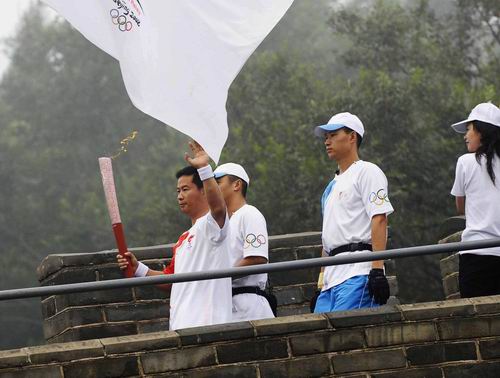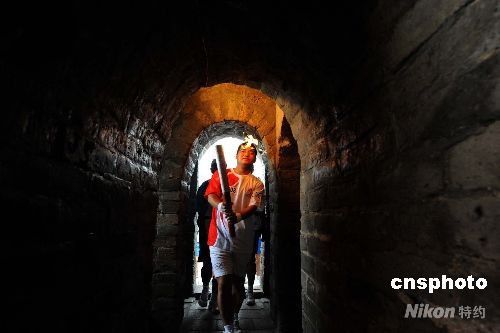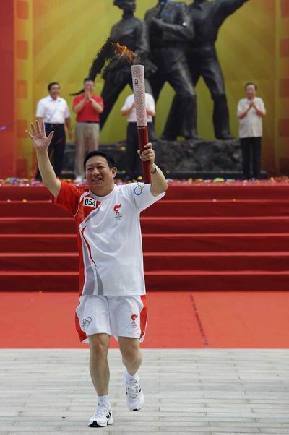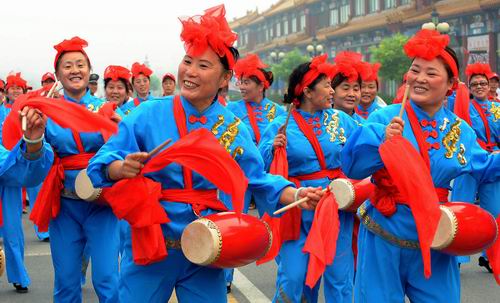 |
|
Torchbearer Li Longjiang carries the Olympic torch on the Great Wall in Beijing August 7. [Xinhua]
|
"It is the first time for the sacred Olympic flame to come to the Great Wall. So, for the first time, the two symbols of the oriental and Western cultures meet here. It is a great honor to see such a grand scene," Xie told Xinhua.
 |
|
Torchbearer Gu Chonghua carries the Olympic torch through the Great Wall in Beijing August 7.
|
The Badaling section of the Great Wall is the best-preserved and most visited part of the Great Wall. The section was built during the Ming Dynasty (1368-1644), along with a military outpost reflecting the location's strategic importance.
The ancient Great Wall, a series of stone and fortifications, was built, rebuilt and maintained between the 6th century BC and the 16th century. The most famous is the wall built between 220-200 BC by Qin Shihuang, the emperor in ancient China. The Great Wall was listed as UNESCO World Heritage Site in 1987.
After the historic run on the Great Wall, the Olympic torch left for Changping District, south of Yanqing, to continue its journey.
 |
|
Torchbearer Wang Haiping runs with Olympic torch in Beijing August 7. [Xinhua]
|
The second day of the relay would see a total of 268 torchbearers, including 29 overseas people, carrying the Olympic torch and running on a 14.58-km route in 3 hours and 4 minutes.
The second-day route comprised 18 sections in eight of Beijing's 18 districts and counties, including Yanqing, Changping, Huairou, Shunyi and Dongcheng.
 |
|
Local residents welcome the Olympic flame in Beijing August 7. [Xinhua]
|